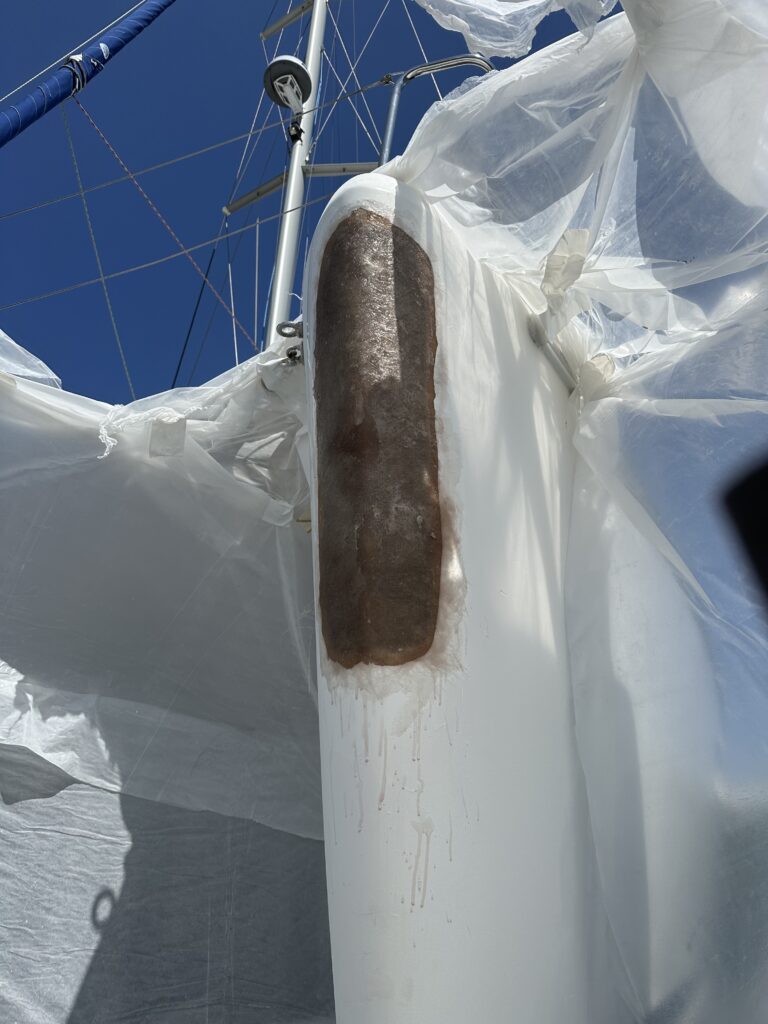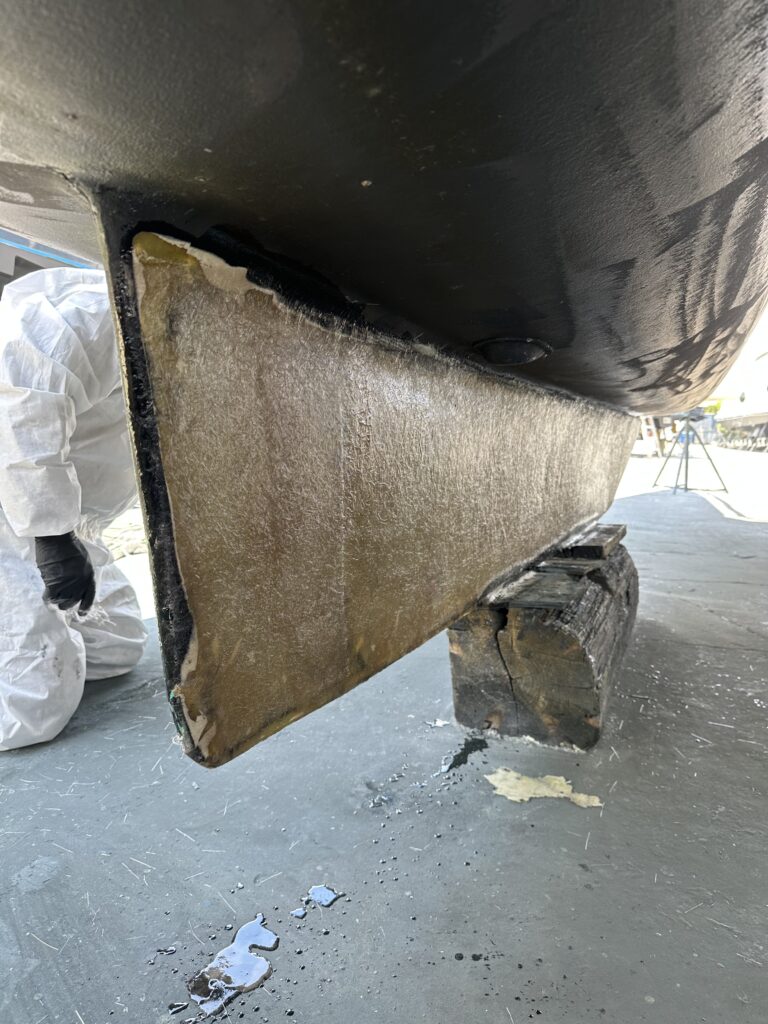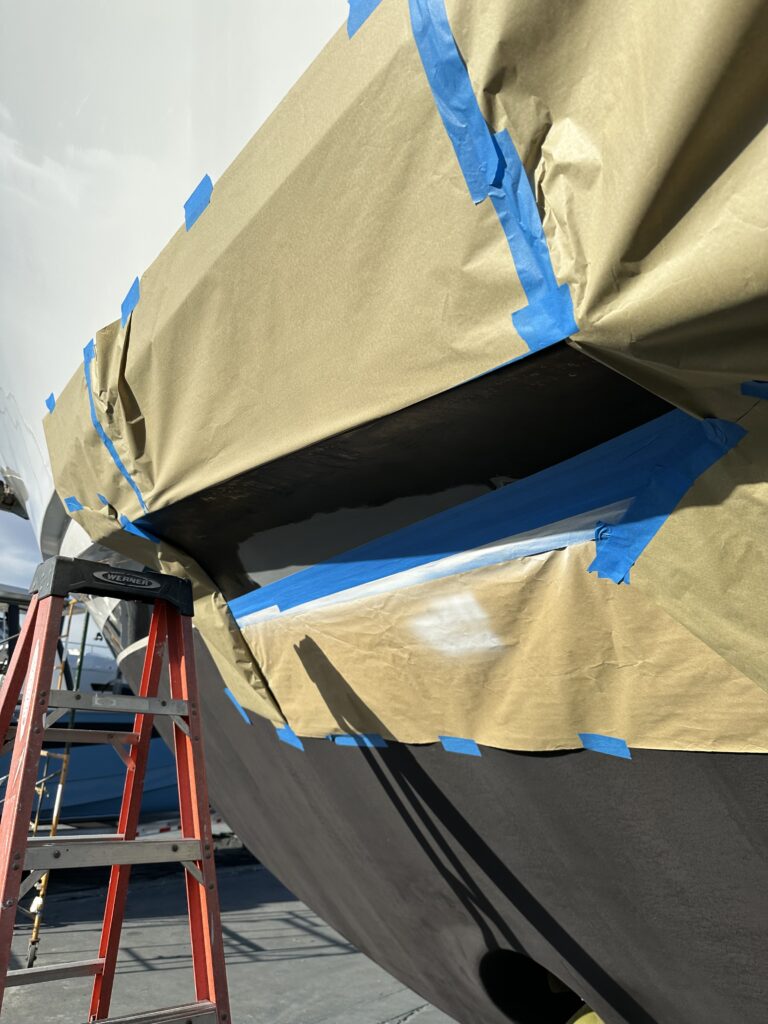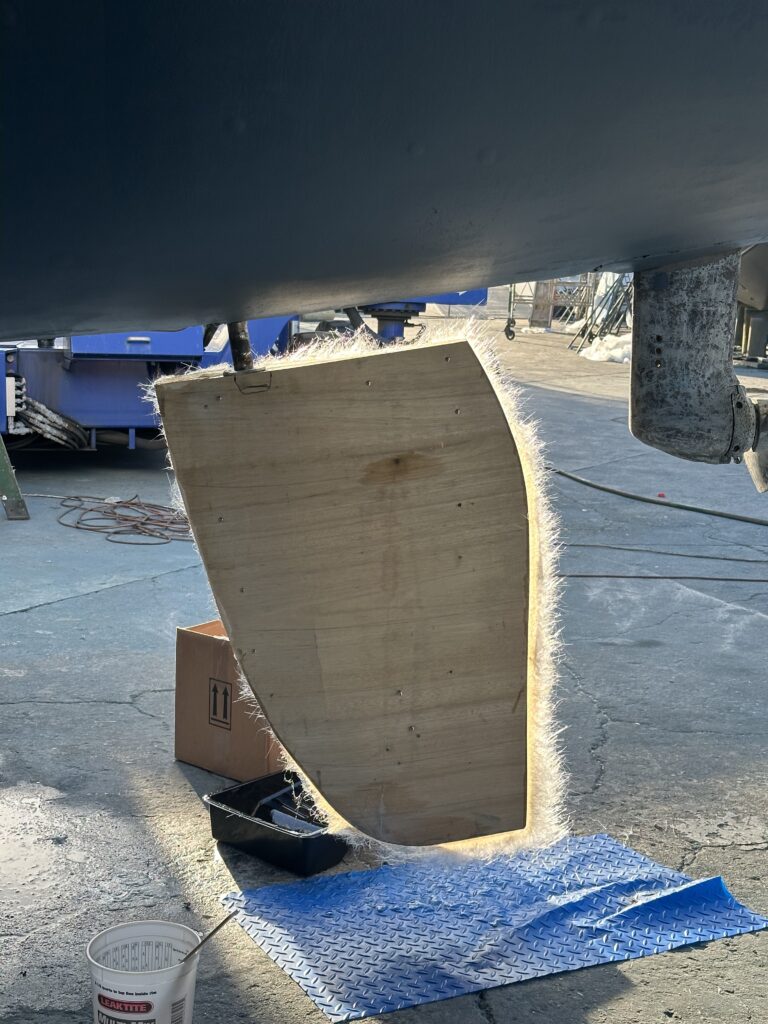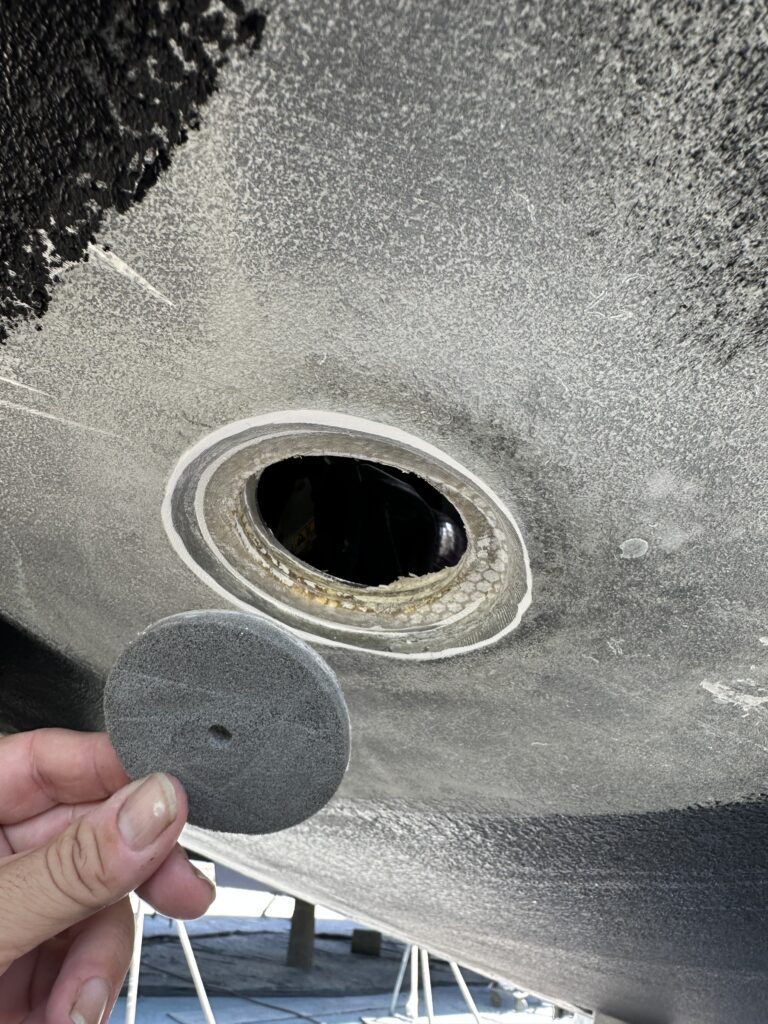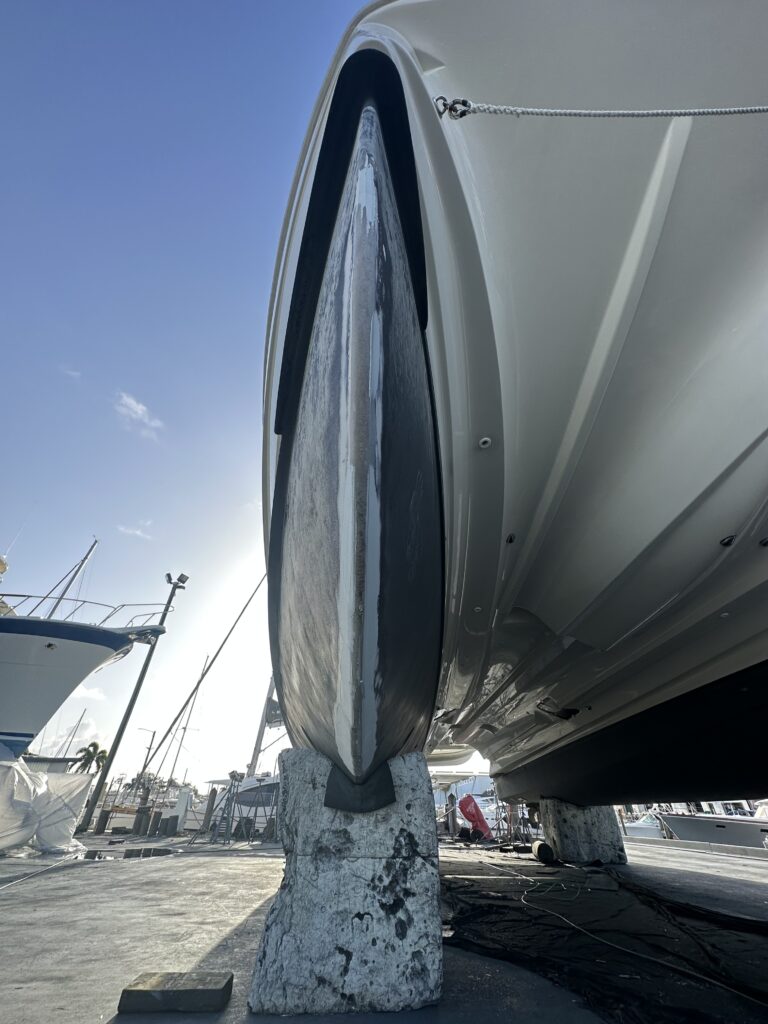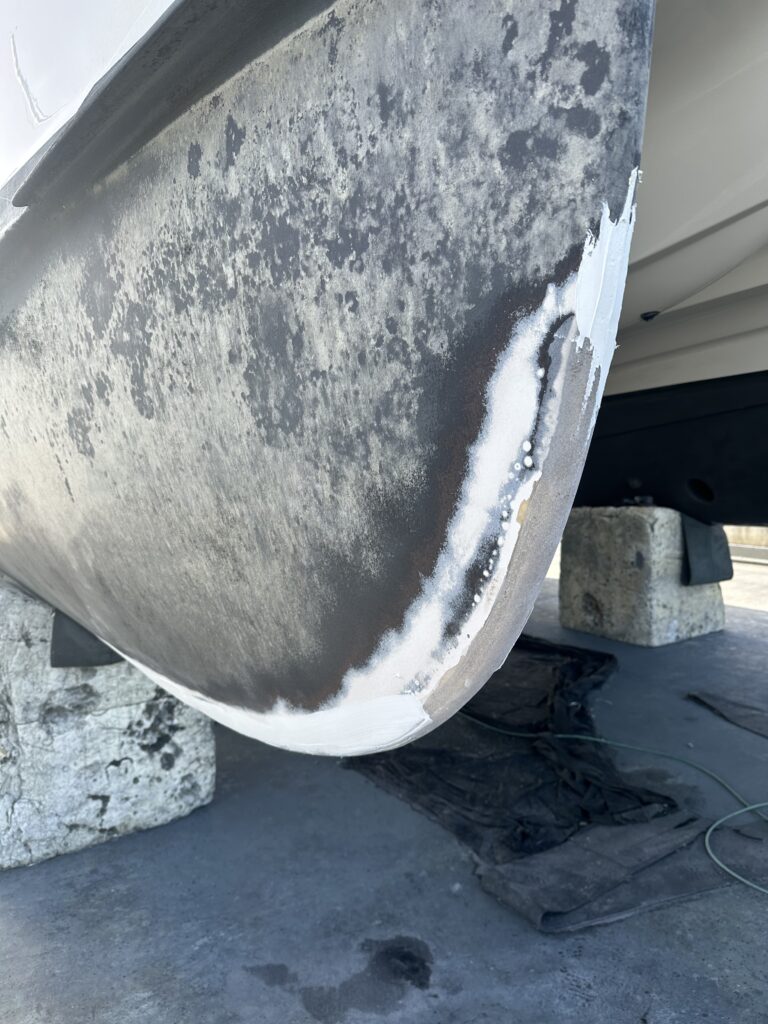Fiberglass and Gelcoat Repair in South Florida
Hull damage, blisters, gelcoat, structural repairs and Awlgrip finishes.
Preserving originality and performance
Hull damage repairs
The proximity to coral reefs, busy waterways, and occasional storms increases the risk of impacts and collisions, resulting in cracks, holes, and chips in the hull. Structural repairs are often necessary to restore the hull’s integrity.
Osmosis, or fiberglass blistering, is a common issue in boats that remain in the water for extended periods. Water penetrates the gelcoat layer and reacts with the resin, causing blisters and fiberglass deterioration. Repairs involve removing the damaged gelcoat, drying the hull, and applying new layers of fiberglass and gelcoat.
Groundings on sandbars or reefs can cause significant hull damage, requiring extensive fiberglass repairs.
The art of flawless restoration
Gelcoat Repairs
Constant exposure to sun and saltwater can cause gelcoat fading, cracking, and peeling. Repairs involve applying new gelcoat layers to restore the hull’s appearance and protection.
Scratches, chips, and other cosmetic damage to the gelcoat are common and require repairs to maintain the vessel’s appearance.
Rebuilding strength, built to last.
Structural Repairs
Damage caused by impacts, wear and tear, or weather can require repairs to decks, superstructures, and other fiberglass structures.
Structural damage to fiberglass stringers and reinforcements can compromise the vessel’s integrity and require specialized repairs.
Superior yacht coatings
AWLGRIP Finishes
With our expertise in yacht refinish and the quality of Awlgrip products, we ensure results that transform your yacht into a floating work of art. We specialize in providing premium yacht painting services, utilizing the renowned Awlgrip system for exceptional results. Our skilled team delivers flawless finishes, ensuring your yacht’s beauty and protection.
Awlgrip’s advanced technology offers unmatched durability, gloss retention, and resistance to the harsh marine environment. We handle every aspect of the painting process, from meticulous surface preparation to precise application, guaranteeing a stunning and long-lasting finish that exceeds your expectations. Trust us to enhance your yacht’s appearance and value with our professional Awlgrip painting services. Additionally, we offer comprehensive yacht refinish services, restoring the beauty and shine of vessels in need of complete revitalization.
Our Clients
Don’t just
take our
word for it


We'd Love To Hear From You
contact us
Hours
- Mon- Fri: 8 am-5 pm
- Sat: 8 am-2 pm
- By Appointment Only

